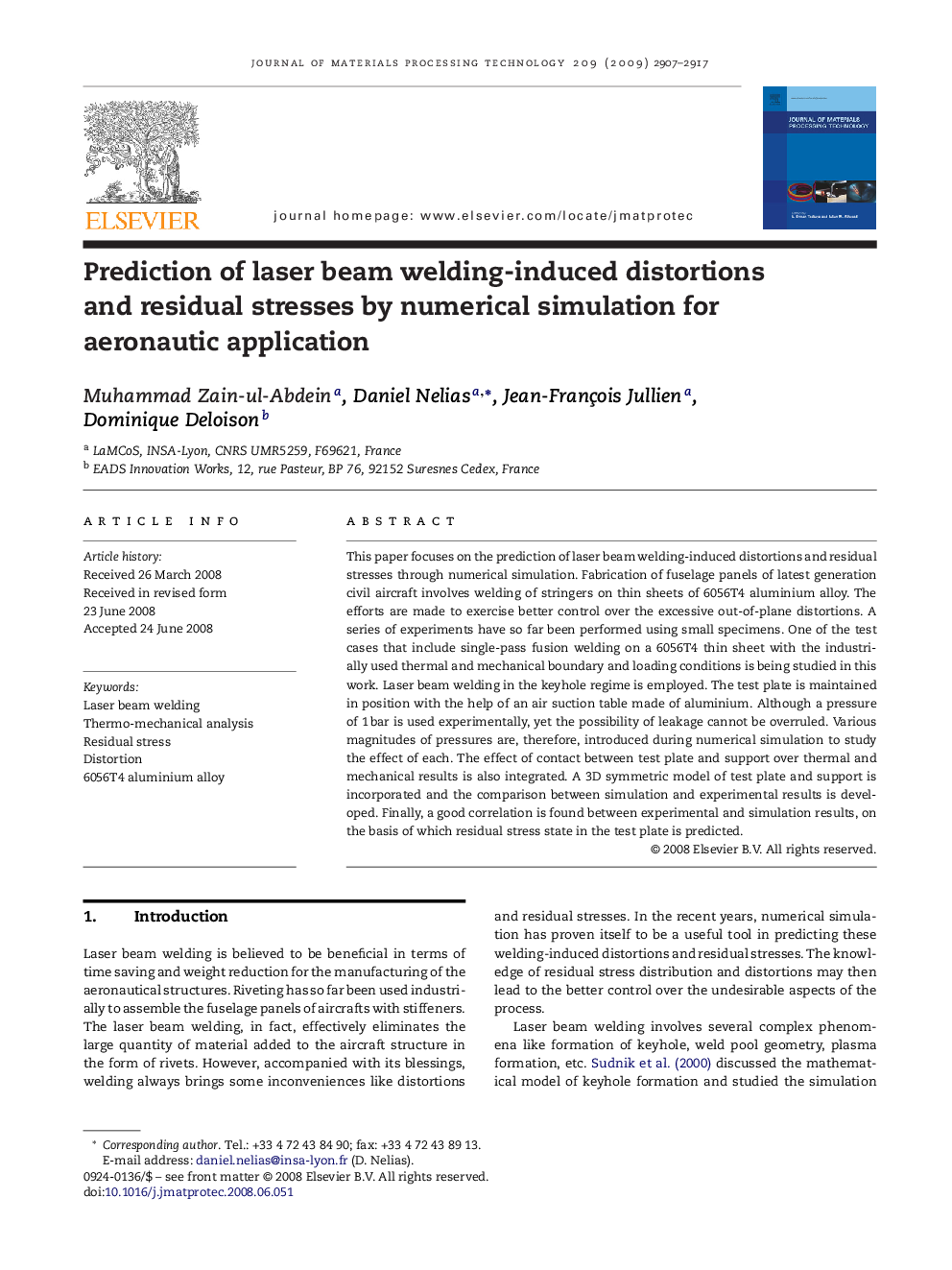| Article ID | Journal | Published Year | Pages | File Type |
|---|---|---|---|---|
| 793587 | Journal of Materials Processing Technology | 2009 | 11 Pages |
This paper focuses on the prediction of laser beam welding-induced distortions and residual stresses through numerical simulation. Fabrication of fuselage panels of latest generation civil aircraft involves welding of stringers on thin sheets of 6056T4 aluminium alloy. The efforts are made to exercise better control over the excessive out-of-plane distortions. A series of experiments have so far been performed using small specimens. One of the test cases that include single-pass fusion welding on a 6056T4 thin sheet with the industrially used thermal and mechanical boundary and loading conditions is being studied in this work. Laser beam welding in the keyhole regime is employed. The test plate is maintained in position with the help of an air suction table made of aluminium. Although a pressure of 1 bar is used experimentally, yet the possibility of leakage cannot be overruled. Various magnitudes of pressures are, therefore, introduced during numerical simulation to study the effect of each. The effect of contact between test plate and support over thermal and mechanical results is also integrated. A 3D symmetric model of test plate and support is incorporated and the comparison between simulation and experimental results is developed. Finally, a good correlation is found between experimental and simulation results, on the basis of which residual stress state in the test plate is predicted.
